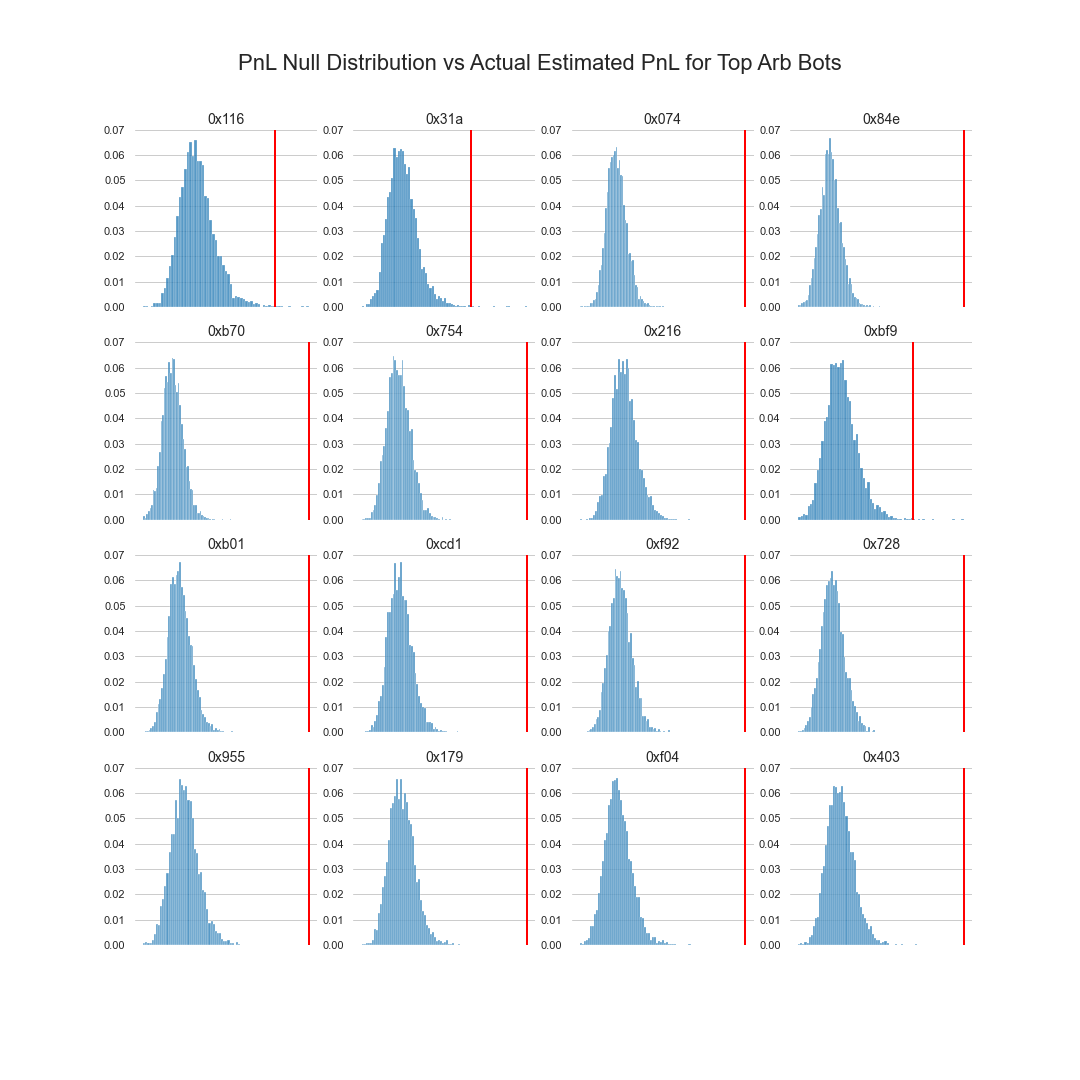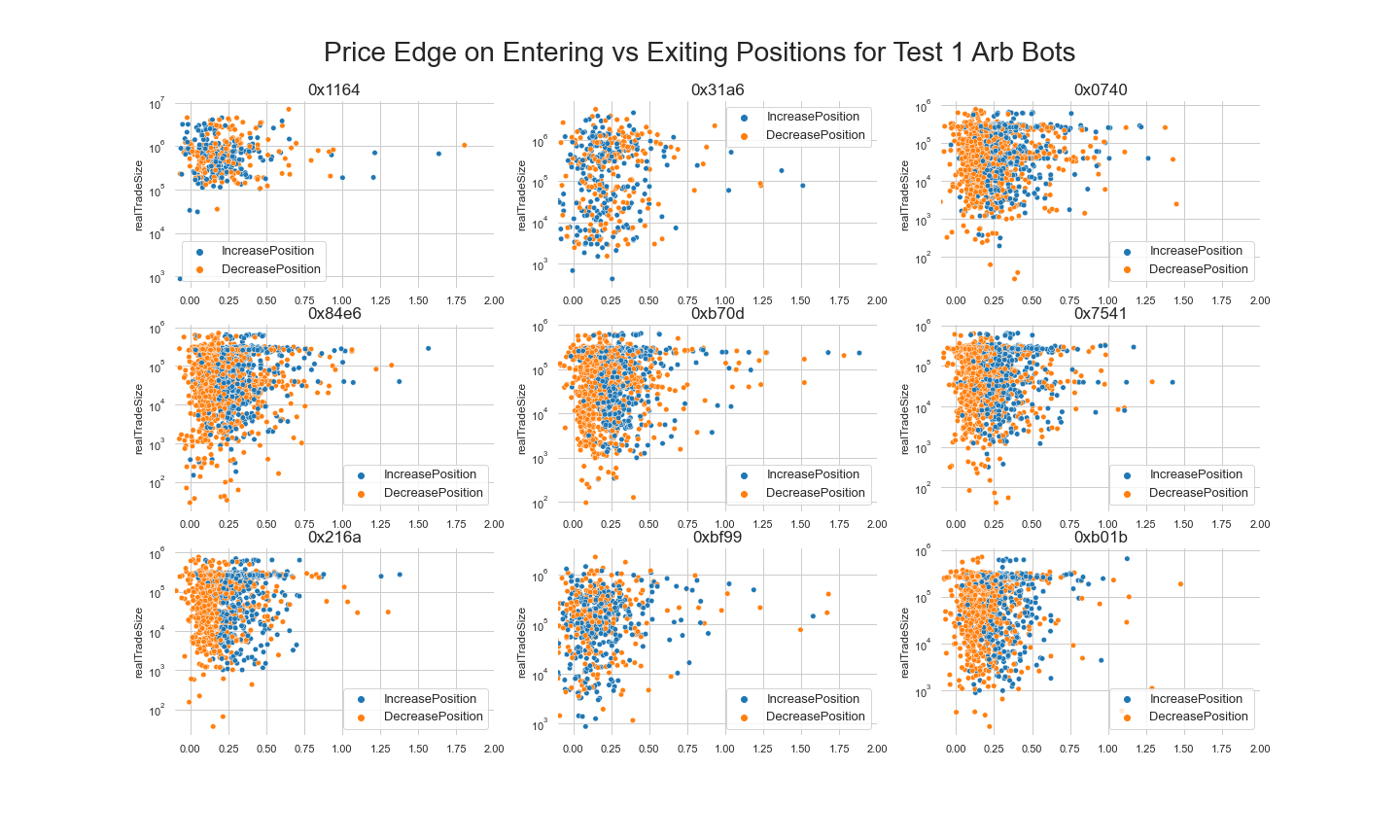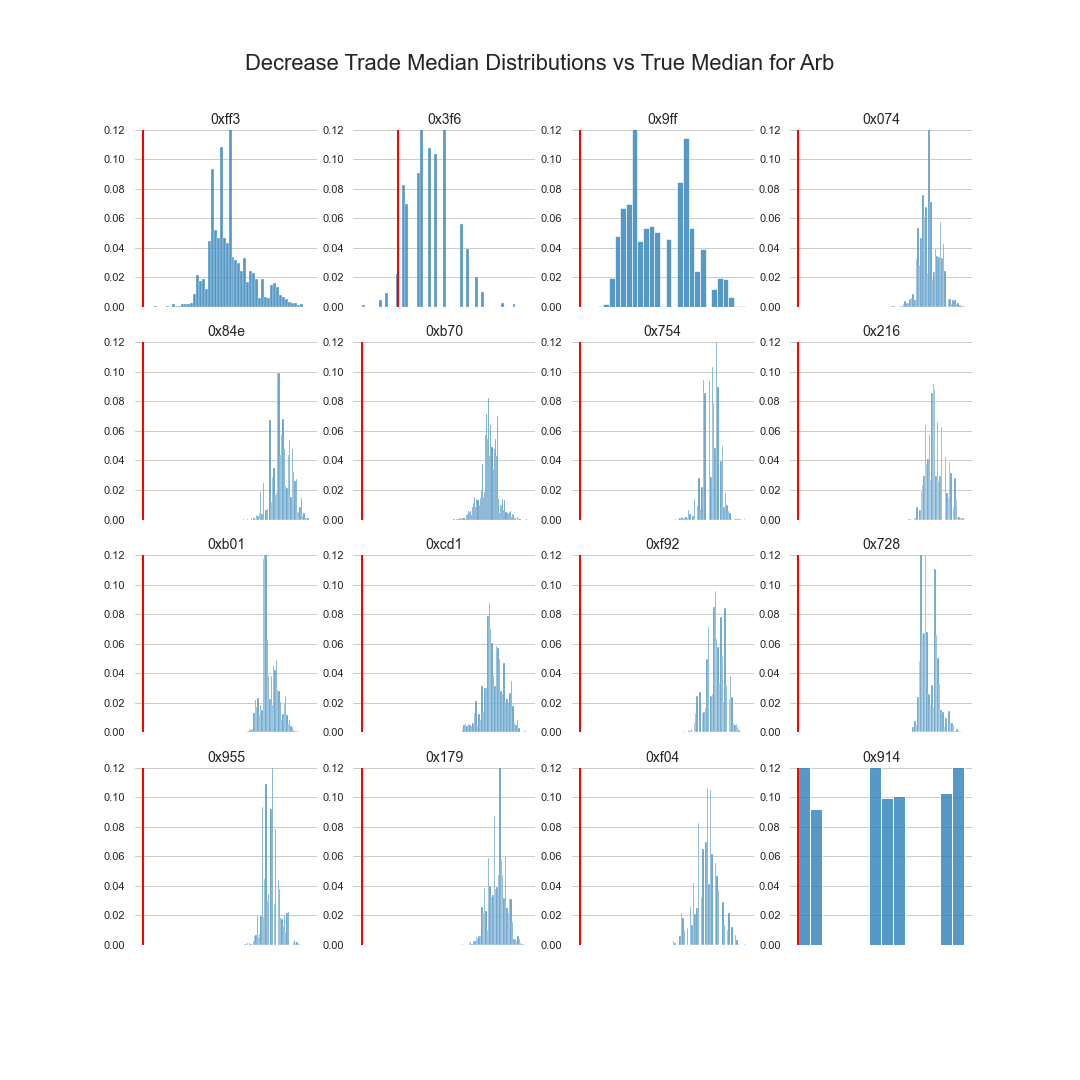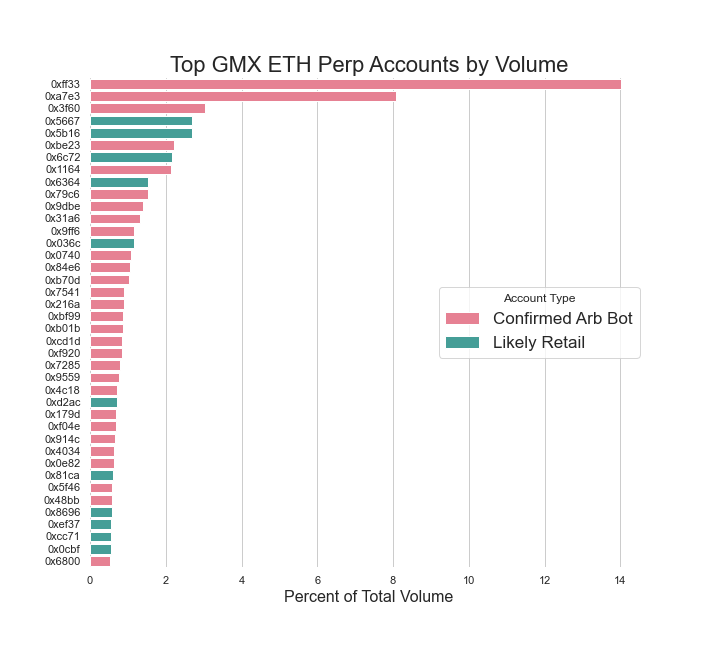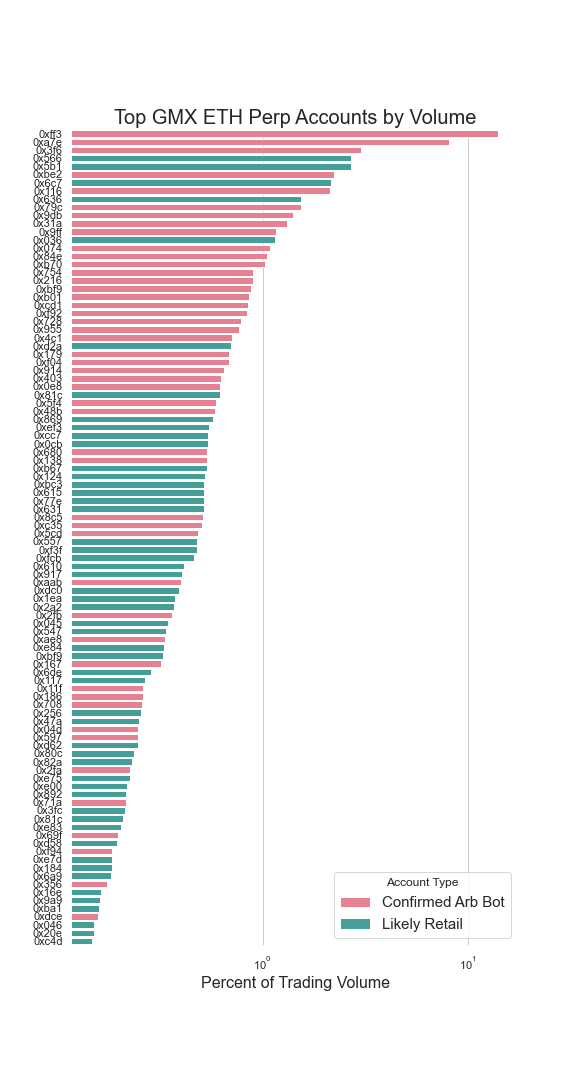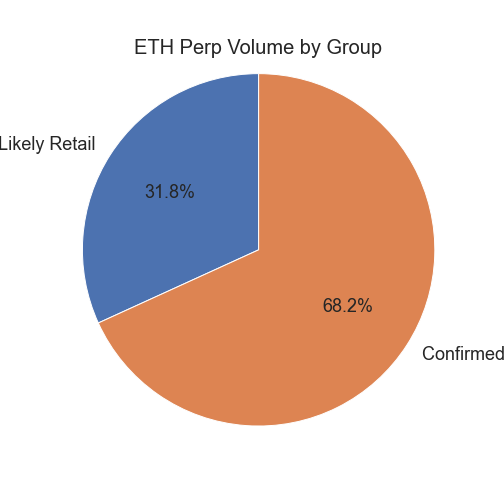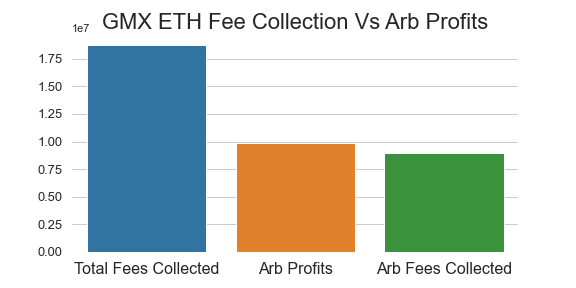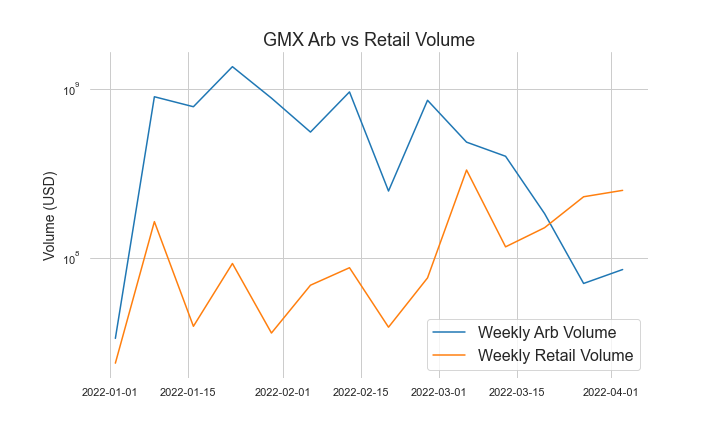In this repo, we analyze perpetuals trade data on GMX since inception in September 2021.
We prove that the majority of volume is arbitrage and share the arb strategy details. The
majority of code is in gmx_analysis.ipynb.
Because Arbiscan timestamps do not accurately reflect the actual transaction times (error is ±2 min), detecting DEX-CEX arbitrage on Arbitrum is more difficult than on L1s. To determine which accounts are systematically arbitraging GMX's oracle price, we take a statistical approach and provide three methods for detecting arbitrage accounts.
Note: We define statistical significance as correctly classifying an arb bot with p < 0.05. Because we use three independent tests, each test has a significance threshold of p < ~0.017.
Non-arbitrage account trade times do not relate to the difference between the GMX price and the Binance price. Thus, if an account sees outsized estimated arb profits based on their trade times and trade sizes, we can classify them as arbitrageurs.
To quantify "outsized" profits on a per account basis, we define the null distribution as the
price_edge (magnitude of the favorable price discrepancy) for trades that decrease position size
sampled on a per account basis.
This test works exceptionally well and we can see that the actual profits are much higher than can be expected from a random sample of the null distribution. For 25 out of the top 100 accounts by volume, we reject the null with p < 0.017.
Many bots run a strategy where they enter positions when the oracle price favors them and
exit as soon as the price converges. Thus, on average, their price_edge is much higher
when putting on positions than taking them off.
While not all arb bots found by Method 1 share this trait, any account that trades at a different oracle price edge when it's entering vs exiting trades must be aware of the edge. We can see stark difference for many found via the first method.
We classify 6 additional arbitrage accounts with this method.
0x3f6 and 0x914 look slightly borderline as they made so few trades, but we can still reject
their null distributions with significance p < 0.017.
Using Methods 1 and 2 we identified 31 arbitrage accounts. Unlike the remaining 69 accounts, the arb accounts only trade at times when it's most profitable to arbitrage. We add all trade timestamps from these 31 accounts to a set of "tainted timestamps," representing timestamps where an arbitrage is highly likely present.
Non-arbitrage accounts that have a higher percentage of tainted timestamps than can be explained by randomness likely use the same selection criteria for trade times.
We define the timing null distribution as trade timestamps sampled from all accounts not classified as arb via Method 1 or 2. We classify an additional 16 accounts as arbitrage using this method.
We define "Confirmed Arb Bots" as accounts that qualify as arbitrage under at least one of the three statistical tests outlined above. Of the top 100 accounts by volume (collectively representing 82.8% of volume), we classify 48 accounts as arbitrage bots, making up about 68.5% of the volume from the top 100 accounts.
Looking at the Top 100 accounts with Log Volume scaling.
The top accounts appear dominated by arbitrage. Note that while confirmed arbitrage bots had a median number of trades of 424, the "Retail" accounts only had a median of 45 trades. Thus, many non-arb accounts just don't have enough trade history to prove or disprove arbitrage.
Since inception, arb bots have extracted an estimated $10M in arbitrage profits. They have, however, also paid a fair amount of fees.
Based on our classifications of arb and retail accounts, we checked whether GMX was getting exponential growth among retail traders. Looking at logarithmic weekly volumes since January 1st, there have been some steady increases.
GMX offers the most liquid slippage-free perpetuals on Ethereum. Unlike some other perp exchanges, we believe GMX has real retail users and the LP fees collected have been impressive. We hope this analysis helps you better understand the scope of arbitrage within slippage-free perpetual exchanges.
